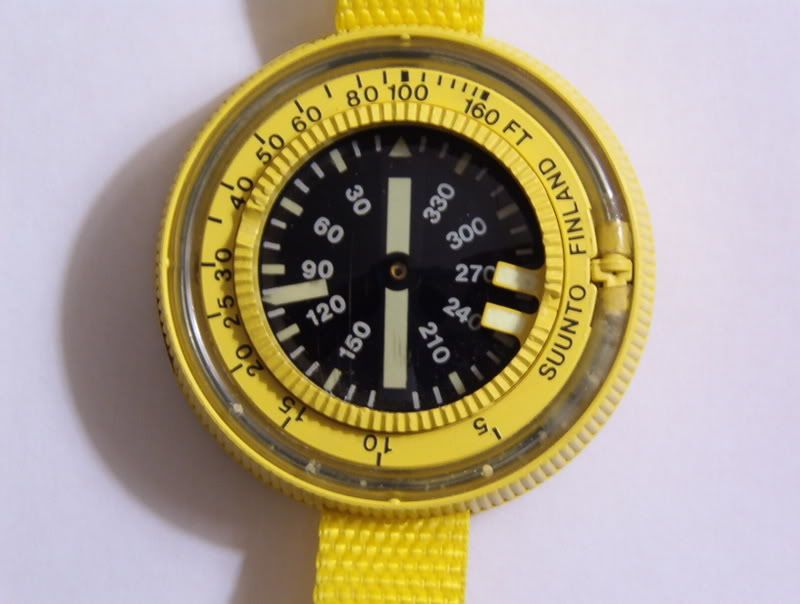I have one of those in black. Also several other capillary tube gauges. They are fairly accurate IF a) The gauge is marked correctly (I found one of mine which was graduated improperly), b) The tube is positioned in the correct position in relation to the depth indicators (some have an index notch like yours, many do not), and c) If you are on your first dive.
The gauge can be inaccurate on subsequent dives due to a small amount of water remaining in the tube from the first dive. When you resubmerge, there is a small "bubble" of water, per se, in the air column, or the water column will be too long, giving a deeper reading than actual (most of the inaccuracy in these gauges errs on the side of safety- i.e. reading deeper than actual).
Theoretically, all of the air in the tube SHOULD return to it's original volume at the surface, thereby forcing ALL of the water out, but temperature also comes into play. Assuming the usual scenario of diving water which is colder than the surface air, the air column in the tube will cool and form a small vacuum while submerged, drawing more water into the tube than what would have been pushed into it due to the water pressure at depth. (Yes, this will also affect the accuracy while you are diving. The larger the temperature differential, the greater the error- again, usually on the safe side.) The remedy for subsequent dives is to simply hold the gauge in your hands or in the sun until the warmed air in the tube pushes the remaining water out.
But then, if sand gets in the tube (as it somehow always does).........................................................





